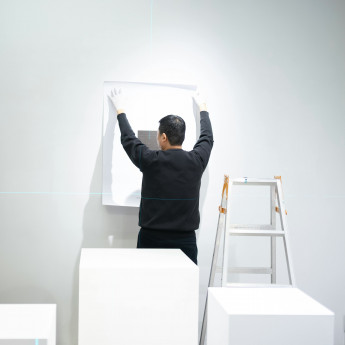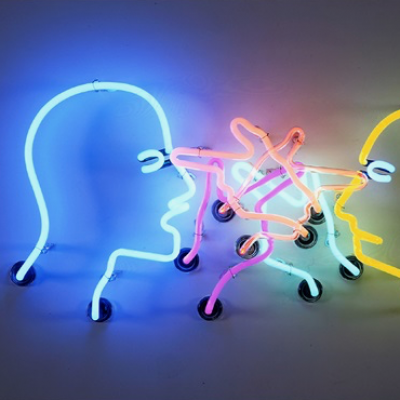
Details
Artist
Styles
28-color silkscreen on 2-ply museum board? // The Brown Rose by Donald Baechler is a vibrant 28-color silkscreen print that transforms a simple floral motif into a visually complex composition. The central figure, a large brown rose outlined in thick, black lines, stands against an abstract, textured background filled with various colors and patterns. The contrast between the earthy tones of the rose and the pastel blue of the leaves creates a striking visual effect, while the layered background adds depth and movement. Baechler’s use of bold lines and contrasting colors brings a graphic quality to the piece, merging elements of pop art with a hint of street art aesthetics. Created in 2015, this limited edition print captures Baechler's signature style, balancing simplicity with intricate detail.
The brown rose, 2015
form
Medium
Size
102 x 78 cm
- Inches
- Centimeters
Edition
Price
Details
Artist
Styles
28-color silkscreen on 2-ply museum board? // The Brown Rose by Donald Baechler is a vibrant 28-color silkscreen print that transforms a simple floral motif into a visually complex composition. The central figure, a large brown rose outlined in thick, black lines, stands against an abstract, textured background filled with various colors and patterns. The contrast between the earthy tones of the rose and the pastel blue of the leaves creates a striking visual effect, while the layered background adds depth and movement. Baechler’s use of bold lines and contrasting colors brings a graphic quality to the piece, merging elements of pop art with a hint of street art aesthetics. Created in 2015, this limited edition print captures Baechler's signature style, balancing simplicity with intricate detail.
- Recently Added
- Price (low-high )
- Price (high-low )
- Year (low-high )
- Year (high-low )
What is Process Art?
Process Art is an artistic movement and creative approach where the focus is on the act of creation rather than the final product. The term process in this context refers to the various stages of art-making, including gathering, sorting, associating, and organizing materials and actions. This movement emphasizes the artistic journey and the human expression involved in creating art, rather than the finished piece itself. Process Art is driven by inherent motivation, intentionality, and the rationale behind the actions, viewing the creative process as the true artwork.















